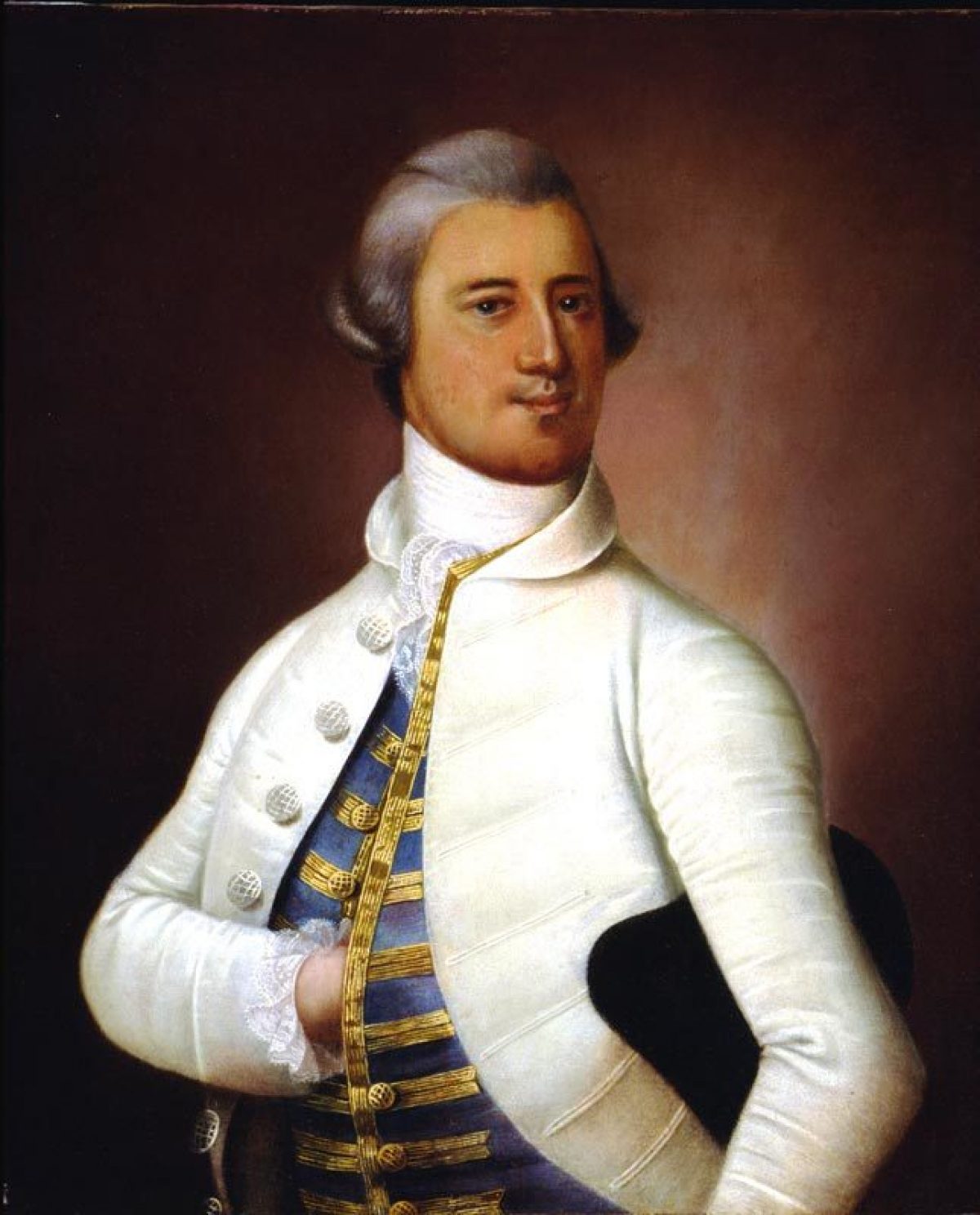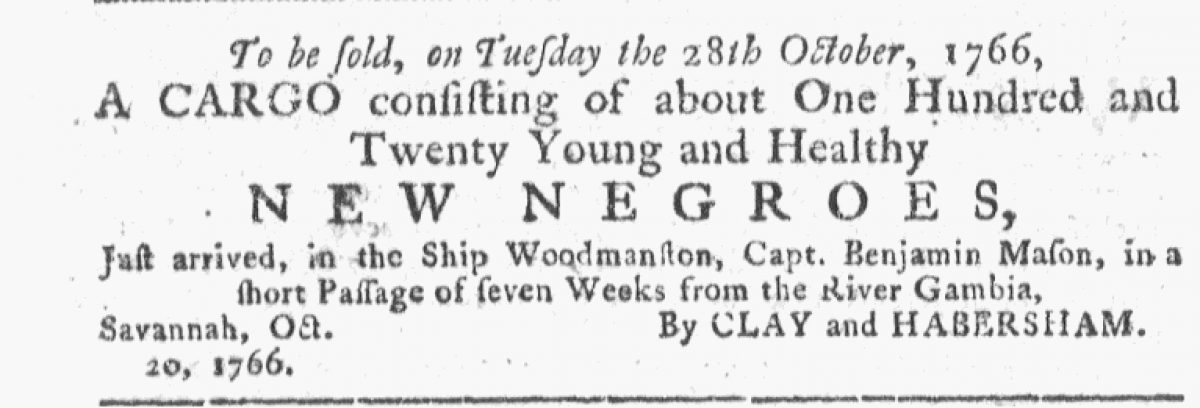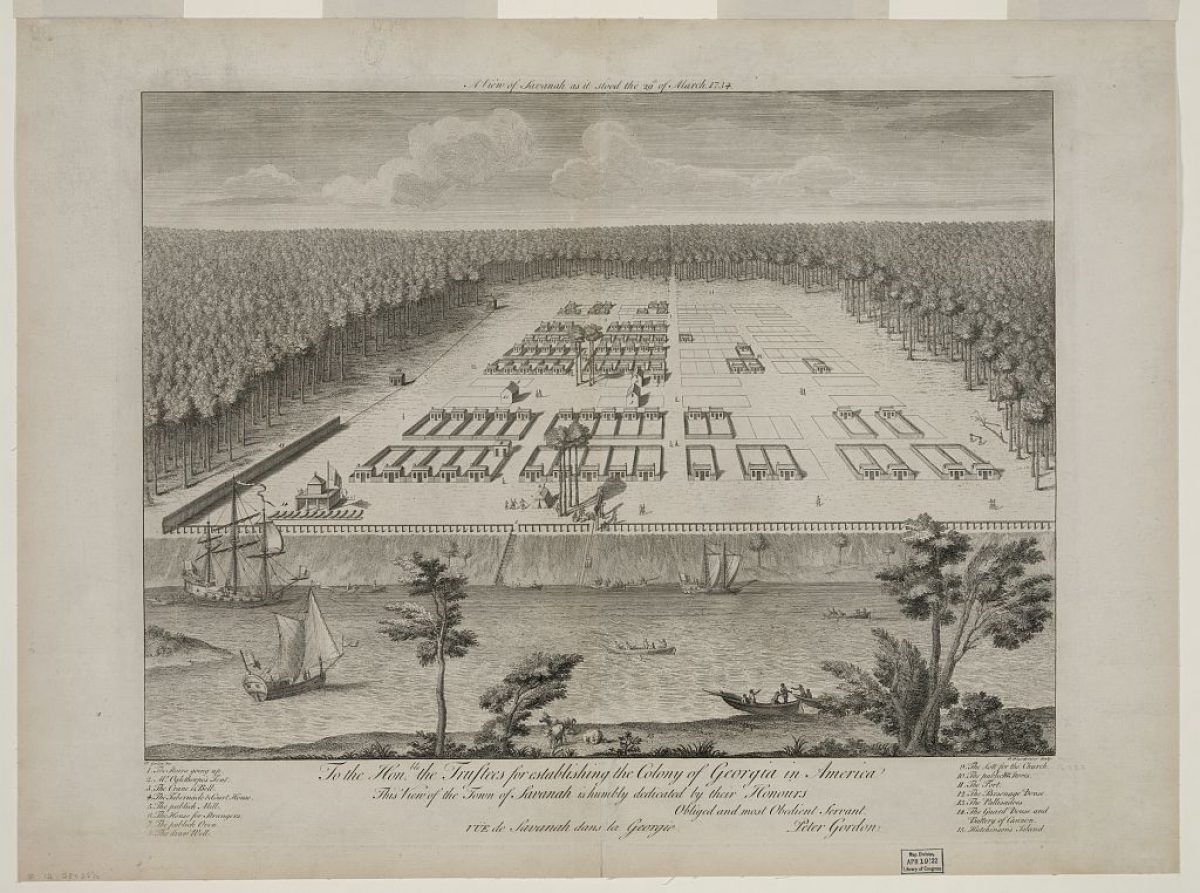[1]
Lucian Lamar Knight, A Standard History of Georgia and Georgians, Volume I (New York: The Lewis Publishing Company, 1917), 269.
⤴
[2]
Database of Princeton Student Origins, Princeton & Slavery Project, accessed 16 October 2017, slavery.princeton.edu/sources/database-of-princeton-student-origins.
⤴
[3]
James Habersham, Collections of the Georgia Historical Society, Vol. VI: The Letters of James Habersham (Savannah, GA: The Savannah Morning News Print, 1904), 67; Jonathan M. Bryant, Dark Places of the Earth: Voyages of the Slave Ship Antelope, (New York: Liveright, 2015), 78-79.
⤴
[4]
Elizabeth Donnan, Documents Illustrative of the History of the Slave Trade to America: Volume IV: The Border Colonies and The Southern Colonies, (Buffalo, NY: William S. Hein and Co, 2002), 623-625.
⤴
[5]
Cherri Shelnut, “Robert Haversham,” in Savannah Biographies, Volume 14 (Savannah, GA: Armstrong Atlantic State University, 1986) 31; W. Calvin Smith, “Habersham Family,” New Georgia Encyclopedia, accessed 16 August 2016, http://www.georgiaencyclopedia.org/articles/history-archaeology/habersham-family; W. Calvin Smith, “Habersham Family,” New Georgia Encyclopedia, accessed 16 August 2016, http://www.georgiaencyclopedia.org/articles/history-archaeology/habersham-family; Joseph Clay Boxes.
⤴
[6]
Carolyn Clay Swiggart, Shades of Gray: The Clay and McAllister Families of Bryan County, Georgia During the Plantation Years (ca. 1760-1888) (Darien, CT: Two Bytes Publishing, 1999), 6.
⤴
[7]
James McMillin, "The Transatlantic Slave Trade Comes to Georgia," in Slavery and Freedom in Savannah, ed Harris and Berry (Athens: University of Georgia Press, 2014), 23.
⤴
[8]
Joseph Clay Jr, (1784), Joseph and Barach Gibbons (1790 NG), Noble Wymberly Jones (1804), Josiah and Thomas Telfair (1805 NG, 1805).
⤴
[9]
William Gibbons (Father, Joseph and Barach Gibbons, 1790 NG), John Houstoun (Uncle, Patrick Houstoun, 1795), William Houstoun (Uncle, Patrick Houstoun, 1795), William Pierce (Father, William Leigh Pierce, 1808), John Habersham (Uncle, Robert Habersham, 1802), Joseph Clay (Father, Joseph Clay, 1784), Edward Telfair (Father, Josiah and Thomas Telfair, 1805), George Walton (Father, George Walton Jr, 1809), John Zubly (Honorary degree, 1774), Noble W. Jones (Father, Noble Wymberly Jones, 1804).
⤴
[10]
Database of Princeton Student Origins, Princeton & Slavery Project, accessed 16 October 2017, slavery.princeton.edu/sources/database-of-princeton-student-origins; James Habersham, Collections of the Georgia Historical Society, Vol. VI: The Letters of James Habersham, (Savannah, GA: The Savannah Morning News Print, 1904), 65.
⤴
[11]
Mrs. John Arscott, Letter to George Derby dated 11 November 1938, 2 in “Clay, Joseph: 1784;” Undergraduate Alumni Records, Series I, Box 42; Princeton University Archives, Department of Rare Books and Special Collections, Princeton University Library.
⤴
[12]
Carolyn Clay Swiggart, Shades of Gray: The Clay and McAllister Families of Bryan County, Georgia During the Plantation Years (ca. 1760-1888) (Darien, CT: Two Bytes Publishing, 1999), 7.
⤴
[13]
Cherri Shelnut, “Robert Habersham,” in Savannah Biographies, Volume 14, (Savannah, GA: Armstrong Atlantic State University, 1986) 31; W. Calvin Smith, “Habersham Family,” New Georgia Encyclopedia, accessed 16 August 2016, http://www.georgiaencyclopedia.org/articles/history-archaeology/habersham-family.
⤴
[14]
James McMillin, "The Transatlantic Slave Trade Comes to Georgia," in Slavery and Freedom in Savannah, ed Harris and Berry (Athens, GA: University of Georgia Press, 2014), 23, 9.
⤴
[15]
Thomas S. Kidd, George Whitefield: America’s Spiritual Founding Father (New Haven: Yale University Press, 2014), 209.
⤴
[16]
McMillin, “The Transatlantic Slave Trade Comes to Georgia,” 9.
⤴
[17]
Burnett Anderson, “James M. Wayne,” in Supreme Court Justices: Illustrated Biographies, ed. Claire Cushman (London: CQ Press, 2012), 97-98.
⤴
[18]
Interestingly enough, Wayne filled the seat of fellow Princetonian, William Johnson ‘1790. According to historian George Lamplugh, fellow Georgia Princetonian, John Alfred Cuthbert ‘1805 also petitioned for the post, but ultimately lost to Wayne, a member of the opposing political faction in Georgia. See George Lamplugh, Rancorous Enmities and Blind Partialities: Factions and Parties in Georgia, 1807 - 1845 (New York: University Press of America, Inc., 2015), 233.
⤴
[19]
Paul Finkelman, “Scott V. Sandford: The Court's Most Dreadful Case and How It Changed History,” in The Chicago-Kent Law Review, Volume 82, (2007), 4, accessed 16 August 2017, http://scholarship.kentlaw.iit.edu/cklawreview/vol82/iss1/2.
⤴
[21]
Anderson, “James M. Wayne,” 99.
⤴
[22]
Sally Swartz, “Pauline Stoney’s Story,” Savannah Port City Magazine (June 1977), 6-7.
⤴







